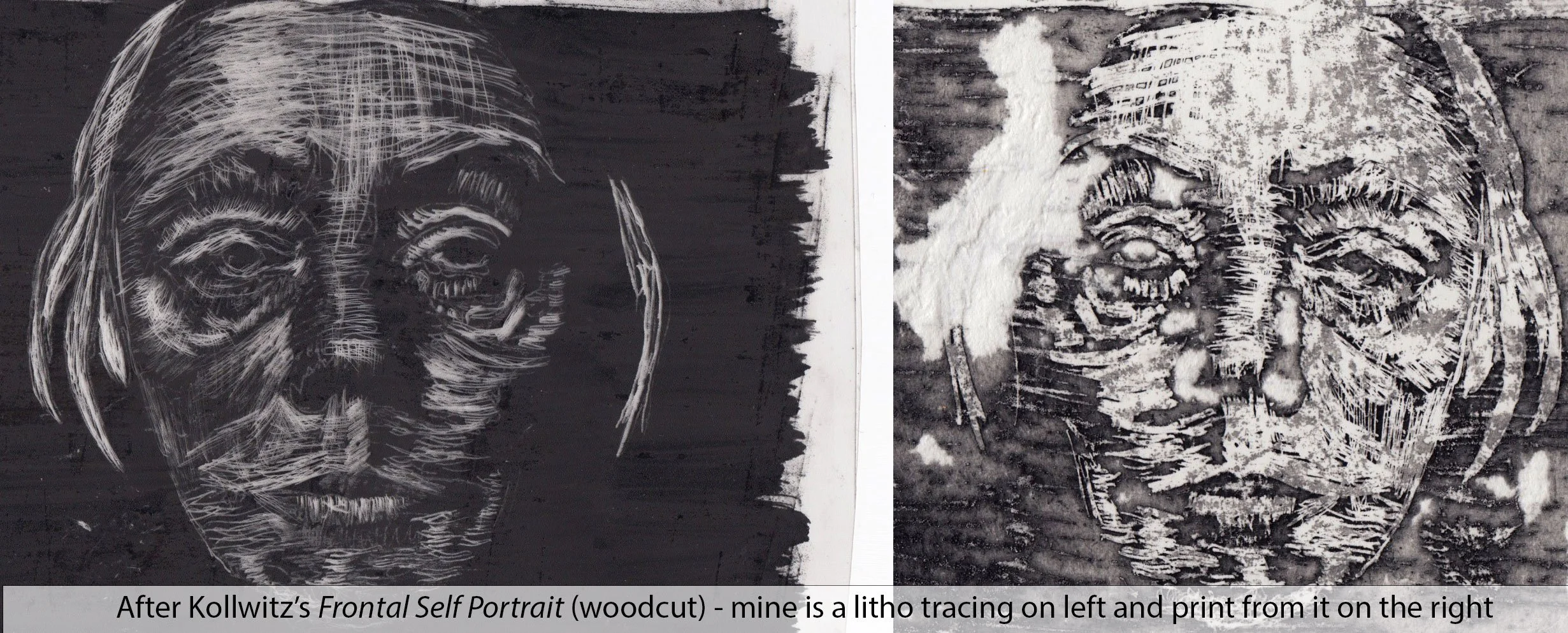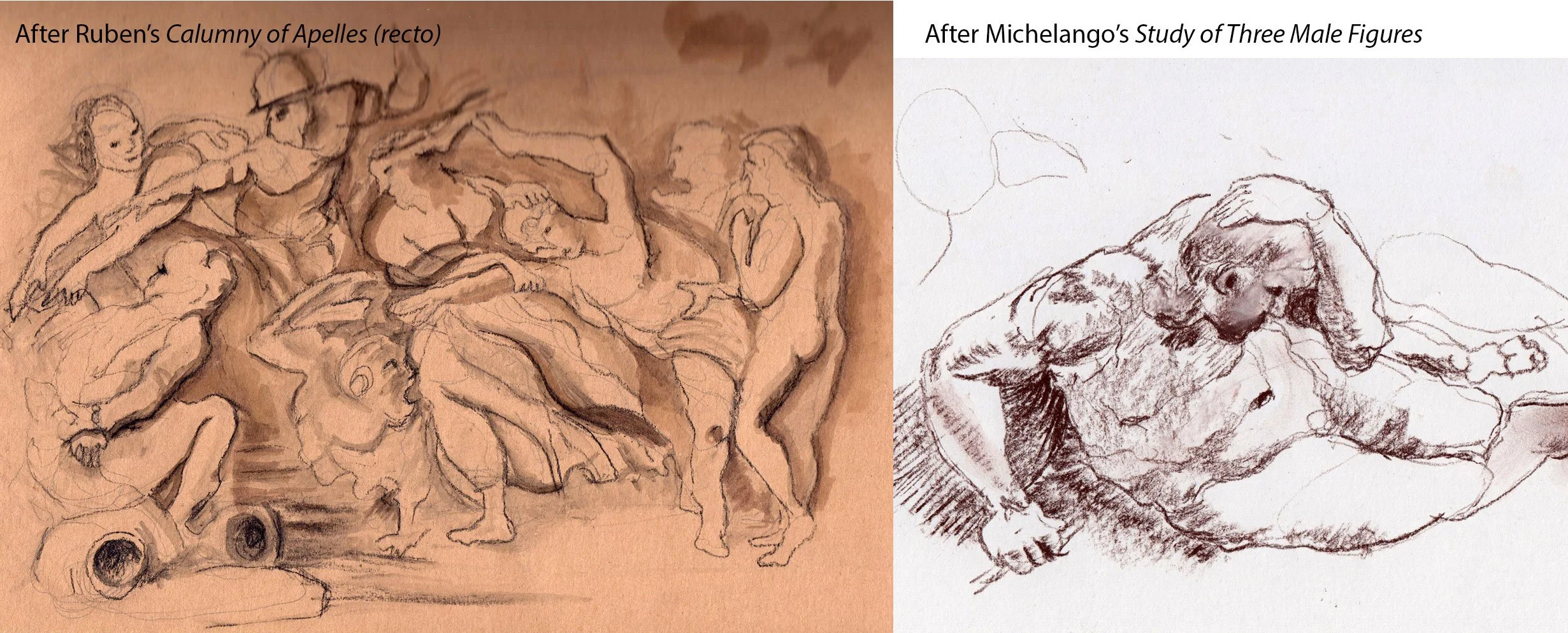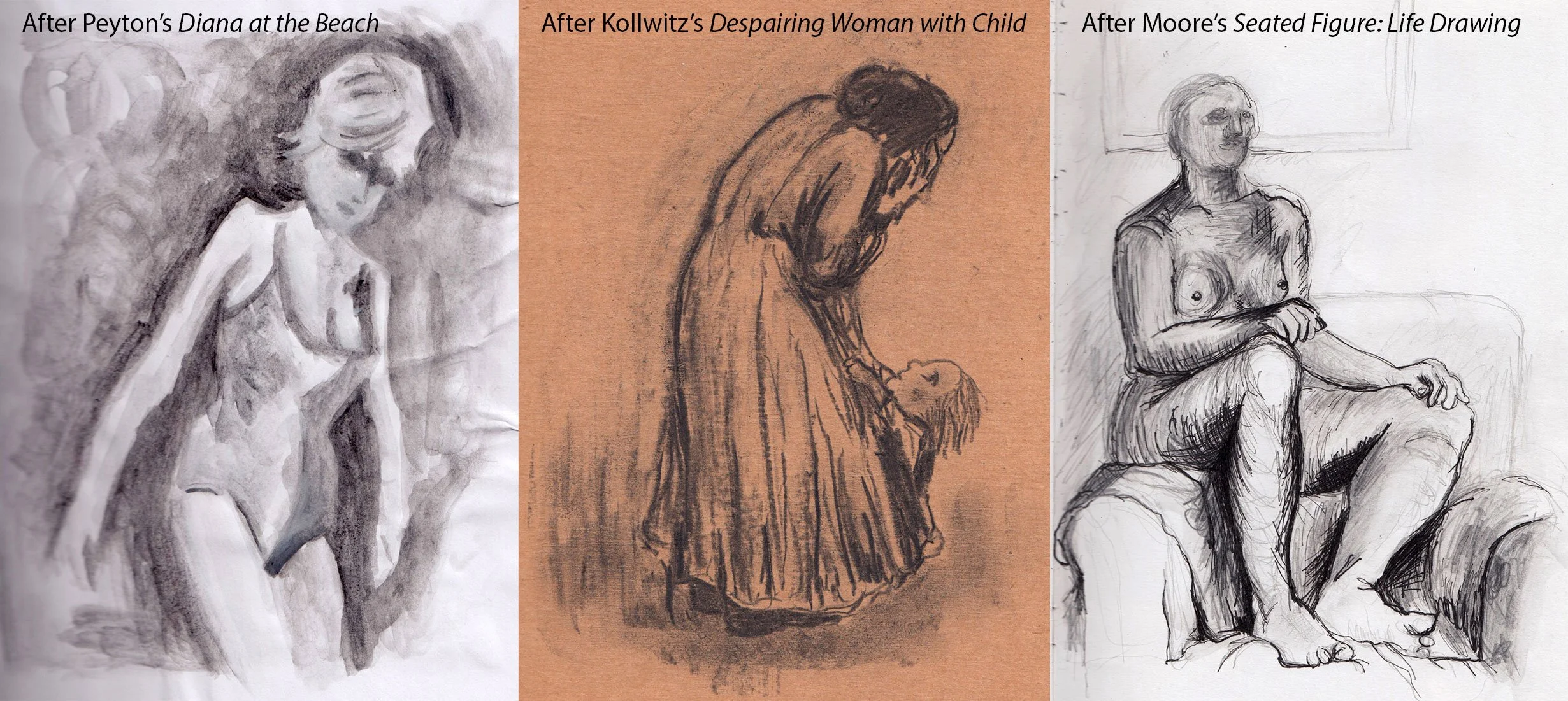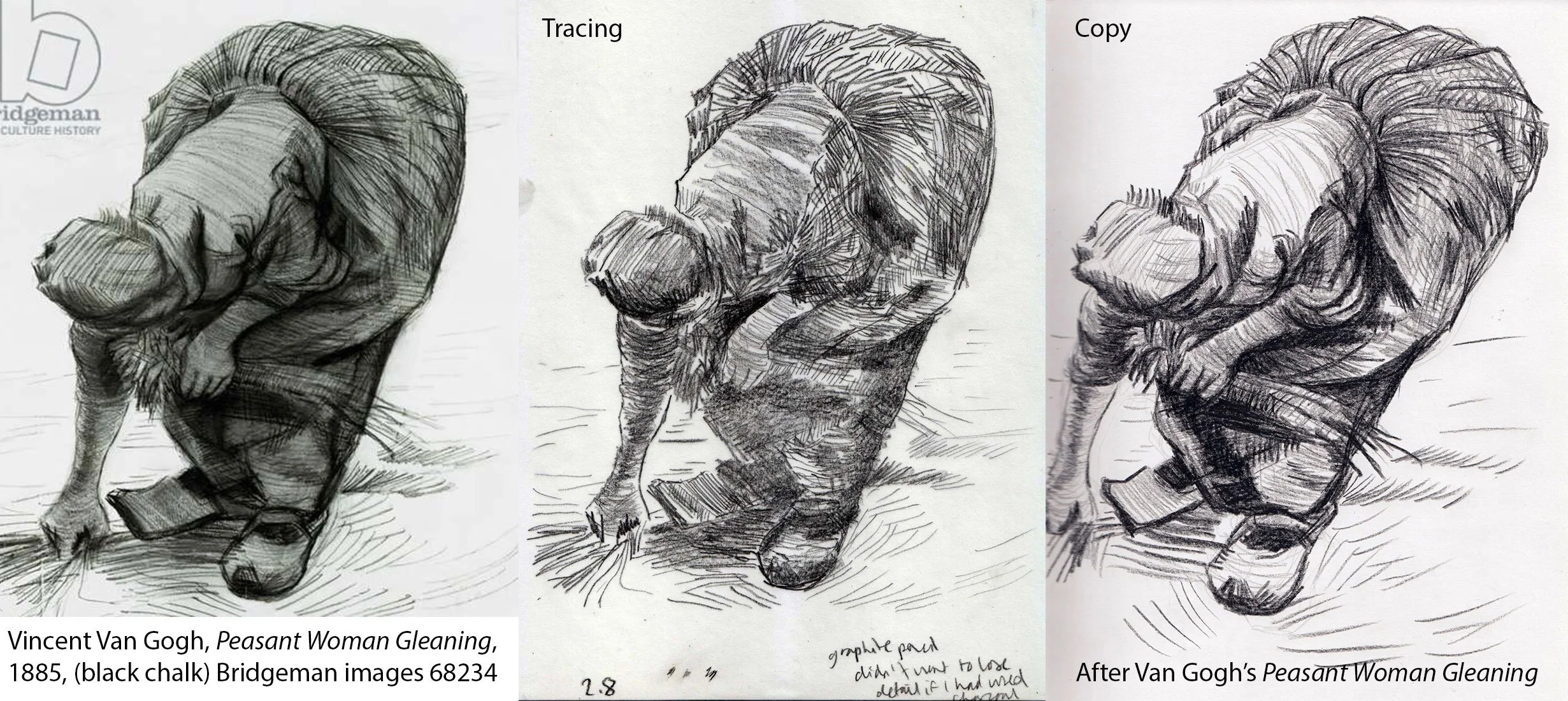Week 3 Reflections: Encountering the Figure
Further research on portraits has led me to explore an image from Kollwitz's in printmaking and, through entropy, have created slightly different copies of her image. This accidental mark-making has fascinated me and helped drive my current practice. In the past, I've done blindfolded touch drawings and learned that the act of drawing rather than the drawing itself merits its worth. Abstraction forces the viewer and the maker to question their preconceptions of what the depicted should look like. Source images can be found here:https://www.moma.org/s/ge/collection_ge/artist/artist_id-3201_role-1_sov_page-23.html
Source images can be found here:https://www.moma.org/s/ge/collection_ge/artist/artist_id-3201_role-1_sov_page-23.html
Week 2 Reflections: Encountering the Figure - Rubens
Having read the introduction to the Lines of Thought Exhibition Catalog (I was lucky to see it a few years back), I was intrigued by Rueben's stance on drawing from drawings, that he would not take true copies and make his versions better than the originals. When you consider making copies in the past was a form of training actively employed by the then Academy, it's a trait that is still in use today, where artists hire studio assistants to mimic their style on a large scale. Even in art school myself, we were tasked with copying an artist and then, crucially, generating artwork in that style. The last bit is essential here, impersonating as a mechanism to develop your ideas. I went to the British Museum, and the perspective I gained from drawing from Reuben's work was inspirational. You can see the work's scale and tend to look more closely at them as you wrap your head around how old the drawings are. Rubén’s drawings are an excellent example of what Friedlander describes as ‘thinking aloud’ (p12, Lines of Thought Exhibition Catalog ) where you can see the artist's stream of consciousness in working out poses and compositions. These drawings can be seen as observational or conceptual studies, as some may lead to further works of art, others as sketchbook studies etc.Ruebens multiple studies that I copied could also be perceived as a brainstorming session where the artist is simply expressing and testing their ideas on paper, which you would associate with sketchbook work. Kept for the artist’s enjoyment and a record of ideas for future brainstorming, not for the public to see and stored away. Or it is seen as a preparatory drawing where the art historian has identified these images in Rueben's finished artworks, making them more valuable. Many initial sketches did not survive; they either became occluded behind final paintings or destroyed over time as they were not deemed valuable by the artist. 
Week 2 Reflections: Encountering the Figure
The tracing the images task was helpful as it got me thinking about the size and media the artists used. A couple of my attempts did not go to plan due to the wrong type of paper. Still, they did lead to some interesting images, for instance, Peyton's image of Diana in a swimming suit on a crinkled paper, as I used too much-wet media without stretching the paper, which brought on connotations of this fleeting moment, a polaroid capture that also had an accidental dip in a pool and then dried out in the sun feels to it.Overall, I have a greater understanding and respect for these simplified images; as researching the artists, I have found that to do these more abstract images, the artist had spent many years doing traditional figure representations first.The scale research helped a lot, and I did certain parts of the image at the actual scale to focus more on applying the media in style like the original image. Making copies of the work has given me an insight into how these various interpreted their ideas and communicated through mark-making. How you could feel the harrowing narrative that Käthe Kollwitz recorded in her image to the energy captured in Reubens's fast preparatory drawings. 
Week 2 Reflections: Encountering the Figure Copies
clothing reflections
Clothing in my selected drawings obscures the form and is used for narrative mainly, describing where the image takes place, from a field to a swimming pool. Most do not have too much background visible, so the clothing sets the narrative. The images also featured stylised and traditional nudes, and the lack of clothes is more jarring in some of these. For instance, Moore's seated figure does not show a glamorous, sexy model; it's like his sculpture, a 3d study of a human figure. It does show his style of thinking in 3D; he's playing with light, space and volume. It's an elongated non-representational image with the viewer looking up at a female or male figure. Because it's a simple charcoal drawing with a background, this is a sketchbook idea, not a preparatory drawing leading to a final image. If you look at Leonardo's image, for instance, he tended to use this life study poses in multiple final images.





